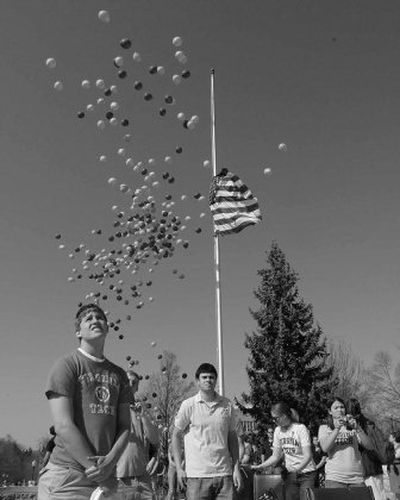Students return after shootings

BLACKSBURG, Va. – No one denied the obvious at Virginia Tech – that pretending to be normal felt abnormal.
Many of the flowers on the memorials had wilted, and the candles had melted. But still they were there, lingering reminders of a gunman’s fury a week earlier. So were the scores of police officers, camera-wielding journalists and green-vested chaplains who stood seemingly at every corner.
As classes resumed, more than 200 volunteers, marked with armbands, offered counseling. They had come from as far as California and sat in about 150 classes where students or professors had been among the victims.
It would not be a normal day. But it would be a collective effort toward one.
With less than two weeks left in the semester, Virginia Tech officials said last week that students unable to finish course work this spring because of the trauma of the massacre will not have to. Those students will qualify for credit with the grades they had earned before the shootings. But university officials said about 80 percent of the 26,000 students returned to classes Monday, a week after Seung-Hui Cho shattered the rural calm of the campus, killing 33, including himself.
“It still feels like home. It’s just a little ransacked, a little messy right now,” said Lauren Grimes, 20, a sophomore from Woodbridge, Va.
The engineering major returned to a class where at least one chair was empty because its usual occupant was killed in the rampage.
“We’re going to be fine,” she said.
“I’d even say better than fine,” her friend Kim Scott, 20, a sophomore from Virginia Beach, added. “I think we’re going to be stronger.”
The campus was mostly hushed at 7 a.m., when a marching band from Alabama approached West Ambler Johnston Hall. The march coincided with the moment the first bullets rang out there a week ago. The drums beat a steady and solemn “America the Beautiful” as the band circled the building. A single white candle burned at a makeshift memorial nearby, next to a phonetically spelled note penned in a child’s hand: “I am sorry for what haped. I hoap there no more bad gieas at VT. I hoap it wilt never haped a gine.”
Meanwhile, dozens of people, mainly students, gathered on an adjacent field, singing a hymn in unison.
“When I breathe in, I breathe in peace. When I breathe out, I breathe out love.”
They bowed their heads in a moment of silence.
More than two hours later on the Drillfield, at the center of campus, students would bow them once more.
Thirty-two bells, one hollow toll after another, sounded in unison with the release of 32 white balloons, one for each victim. Then, at once, 1,000 maroon and orange balloons drifted skyward, representing the campus’ united front. Soft sobs could be heard.
“Our students have showed their resilience today,” Mark G. McNamee, provost and vice president of academic affairs, said later in the day.